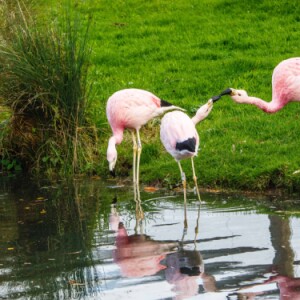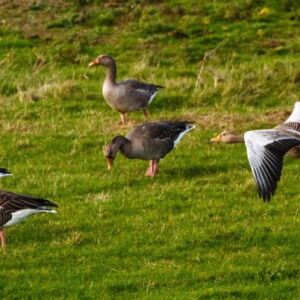A Collared Pratincole at WWT Slimbridge
G. and B, who were both former blippers once upon a time, came to stay for a couple of nights on their way home from visiting their extended family in the west country. I’d suggested visiting Slimbridge which they were keen to do. We left home in mid-morning and drove via Nailsworth, where I wanted to pop into a friend’s exhibition which was only on for five days. Pip Heywood is an award winning documentary film editor who worked at the BBC in Bristol for thirty-five years. Now retired from there, he continues making films for himself and occasional clients. You can see several of his films here. His exhibition featured new films made in the last year which were grant funded by the Arts Council.
We then drove about eight miles to WWT Slimbridge and spent a few hours there. I wanted to go to the Estuary Tower to look at the wide ranging views over the Severn Estuary. It is a large area of mostly grassland that is intended to be flooded by the tidal water with adjacent lakes and copses behind the floodbanks, providing a wonderful resource for feeding and protecting massed flocks of over-wintering birds. A few of the cranes, which are now resident at Slimbridge, were feeding on the marshland towards the tidal river along with countless geese of several species. At one point I followed three cranes flying inland back into the lakes of the centre which I've added as an extra.
G. and B. wandered around the whole site whilst I stayed a little longer at the tower before heading to the South Lake where a rare visiting bird, a Collared Pratincole, was rumoured to be visible. When I reached the South Lake hide there were a great many twitchers with cameras and binoculars all focused on one spot on the lake about twenty yards from the building. A kind official volunteer guide told me that yes, this was the Collared Pratincole, and explained that it normally resides in summer in the Mediterranean and then flies souths to overwinter in Africa. The recent warm weather across western Europe caused by prevailing winds from the south is likely to have brought the bird north, and its great good fortune was to land at Slimbridge where it could be protected and find ample food. The guide said that although it is classed as a wading bird, it actually was busily feeding on wasps, and probably fattening itself for the long journey back to Africa when conditions allowed. I’ve blipped a photo I managed to get soon after my conversation, showing it flying from its perch on a low bank of the lake to a small island a few yards away, carrying a wasp in its beak.
We all a had a great day out.




Comments
Sign in or get an account to comment.


